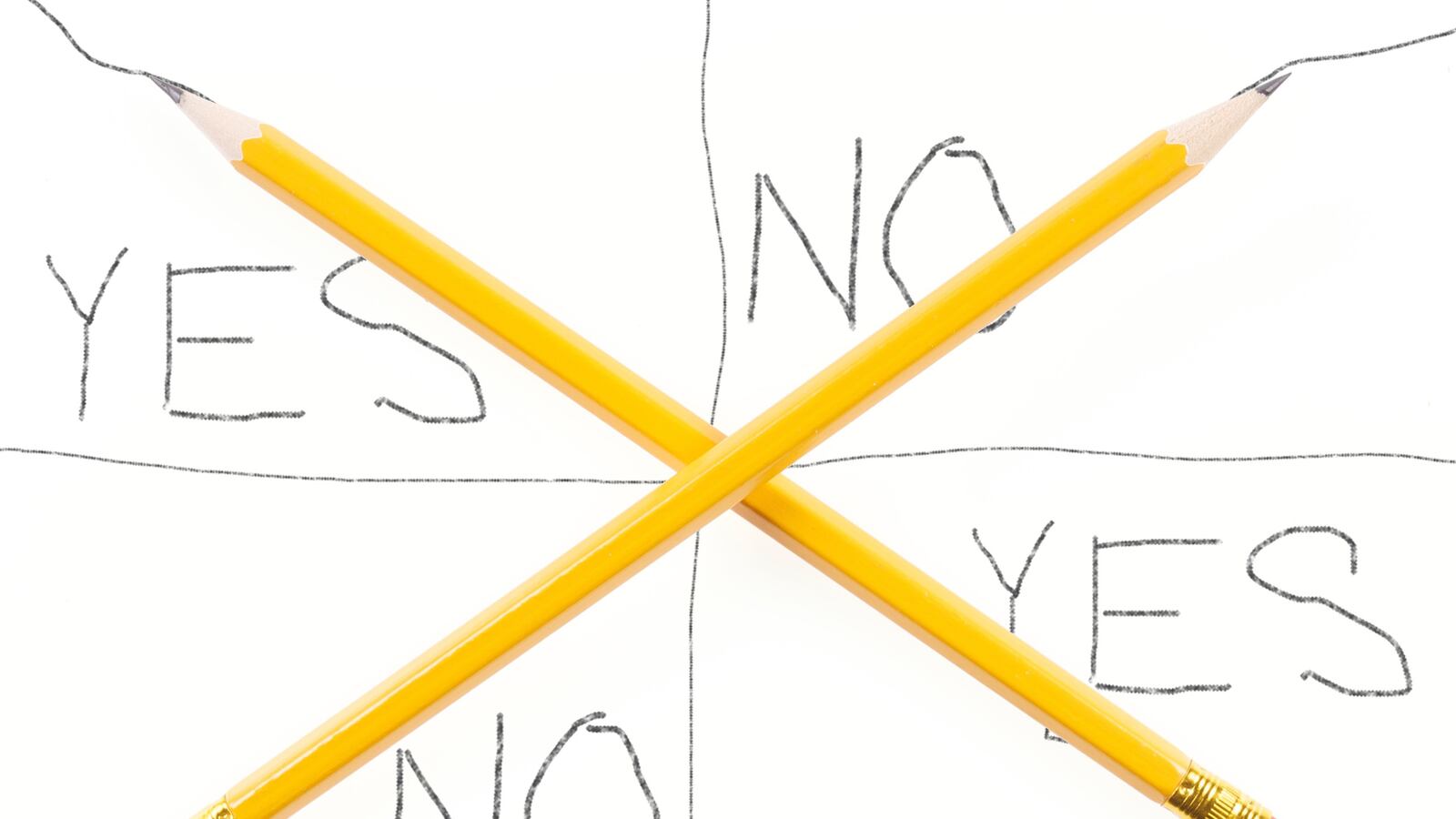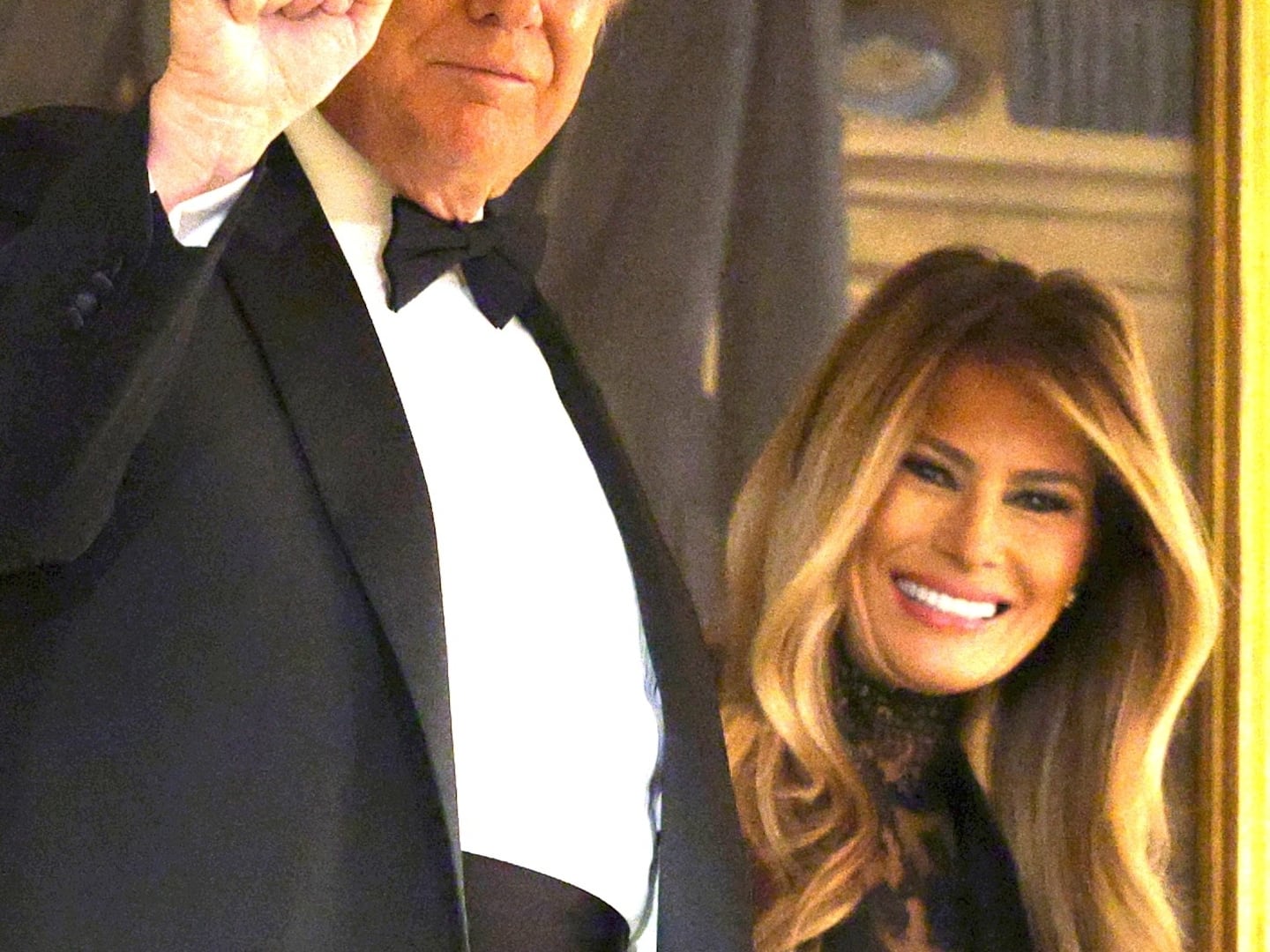There’s something scary going on in today’s trending Twitter topics. And no, it’s not just the concept of sourcing stories from trending Twitter topics. We’re talking about the Charlie Charlie Challenge, a sort of DIY Ouija-board craze that’s sweeping Hot Topics and junior Satanist circles across the nation.
The script is simple: Cross two pencils over a piece of paper decorated with “yes” and “no” boxes (there’s also a more complicated six-pencil alternative for especially eager heathens). Make sure your eyeliner is on fleek while your BFF/fellow demon worshipper checks the lighting and frames the shot. Next, summon your local suburban spirits with the invocation “Charlie, Charlie, are you here?” If Charlie is down to party, the pencils will point towards “yes,” and you can proceed to ask him any yes/no question. After thoroughly freaking yourself out and/or FINALLY figuring out which One Direction member you’re going to marry, proceed to upload your voodoo vid to Twitter/Instagram/Vine/ any other social media site your parents have definitely never heard of it. Now you’re a minor Internet celebrity riding the wave of an extremely stupid Twitter trend. Take a celebratory Snapchat/refresh your page views/retweet your friends’ Charlie Charlie Challenges/eat a snack.
Of course, these tweet-happy tweenagers aren’t just Hogwarts rejects employing the dark arts to ascertain the exact date of Justin Bieber’s upcoming album release. They’re also revisionist historians and cultural appropriators! One Charlie Charlie Challenge creation myth that’s been making the rounds claims that the exercise, which is also referred to as “The Pencil Game,” “is a traditional Mexican ritual wherein players (usually children) are said to contact the spirit of a child named Charlie.” But a little fact-checking reveals that “Charlie” is about as authentically Mexican as Señor Frog’s. According to Maria Elena Navez of BBC Mundo, “There’s no demon called ‘Charlie’ in Mexico.” Navez reports that most Mexican legends derive from Aztec or Mayan mythology, and have names to match—think “Tezcatlipoca,” not Timmy. Even if this legend was conceived post-Spanish conquest, the demon would be called “Carlitos,” not Charlie, proving Navez’s point that “Mexican demons are usually American inventions.”
As befitting a fickle tween trend, the Charlie Charlie Challenge is already facing backlash. One popular screenshot details Charlie’s sinister motives while emphasizing the importance of ending every seven-minutes-in-hell session with a polite “Charlie, Charlie can we stop?” Apparently not saying goodbye is a foolproof recipe for a good old-fashioned haunting. This practical PSA has been floating around Twitter, often with the caption “RT to save a life.” While Charlie Challengers have clearly been looking out for their own, a Philadelphia priest has taken matters into his own hands in an open letter to his student. Father Stephen McCarthy warned his pupils “the problem with opening yourself up to demonic activity is that it opens a window of possibilities which is not easily closed.” He then ordered them “to NOT participate” in the challenge and “encourage others to avoid participation as well.” Because if there’s one way to combat a demonic adolescent trend, it’s a religious authority figure promising actual supernatural contact. With a Catholic priest already taking this challenge seriously, teary parent testimonials and calls for increased border patrol can’t be far behind.
But before you hide your kids from the sinister grasp of yet another Internet fad, try hitting the books. Back in the day when the Ouija board was still the hottest paranormal activity around, Dr. Chris French spoke to Smithsonian Magazine on its legitimacy. Dr. French explained that “it can generate a very strong impression that the movement is being cause by some outside agency, but it’s not… with Ouija boards you’ve got the whole social context. It’s usually a group of people, and everyone has a slight influence.” The Charlie Charlie Challenge is basically the Ouija’s board’s kid brother—and while these phenomena might seem otherworldly, they’re actually the direct result of the groupthink and expectations of the participants involved. In other words, the only things tweens have to fear are tweens themselves.






